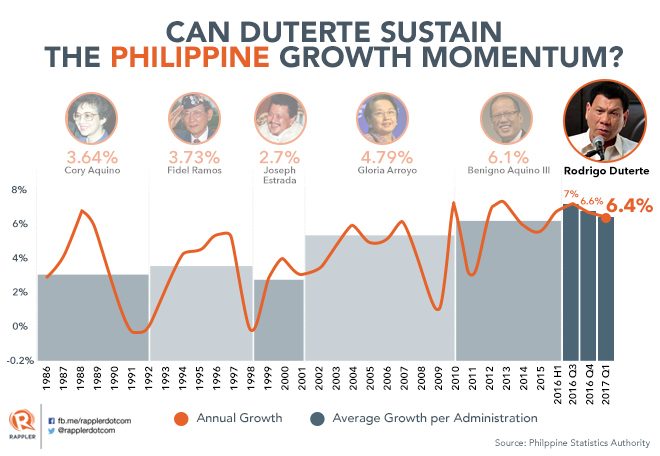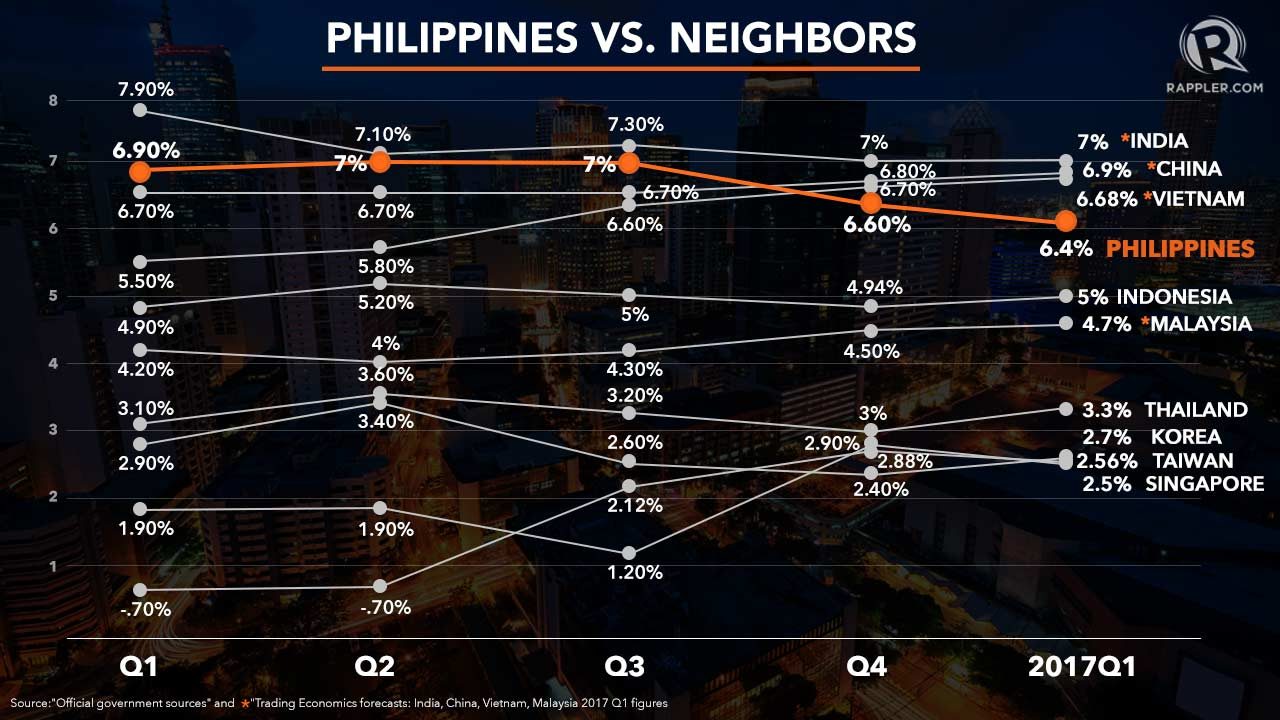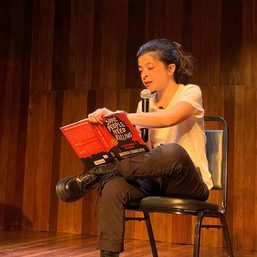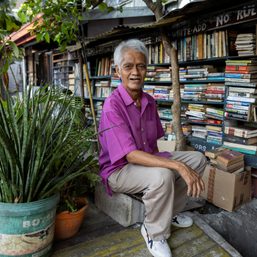SUMMARY
This is AI generated summarization, which may have errors. For context, always refer to the full article.

MANILA, Philippines (UPDATED) – Slow implementation of big-ticket infrastructure projects is taking a toll on the country’s economic growth, which slipped to 6.4% in the 1st quarter of 2017, its slowest pace in over a year.
Despite a recovery in agriculture and robust growth in exports, the gross domestic product (GDP) grew slower to 6.4% in the first 3 months of 2017, a decline from the 6.6% growth during the 4th quarter of 2016 and 6.8% in the 1st quarter of 2016, the Philippine Statistics Authority (PSA) said on Thursday, May 18.
It was during the 3rd quarter of 2015 when the country’s GDP growth last slowed down to 6.2%. GDP is the total amount of final goods and services produced in a country.
“[T]he changing of the guards of the government and reorientation of programs really take time to settle, and this slowed government spending for the quarter. Note, however, that this was better than during the previous administration where government consumption spending and public construction contracted by about 15% and 37%, respectively,” Socioeconomic Planning Secretary Ernesto Pernia Jr said on Thursday.
Public construction grew by only 2% in the 1st quarter of 2017, compared to 38.5% growth registered in the same period a year ago.
High base effects due to election spending during the 1st quarter of 2016 also did not help with last quarter’s GDP growth performance.
“Base effects weighed heavily on growth since 1st quarter of 2016 was the peak of the election cycle. Government spending in 1st quarter 2017 was disappointingly slow as well as availment of agencies on disbursed funds were quite low,” Emilio Neri Jr, Bank of the Philippine Islands (BPI) lead economist, told Rappler.
“Slower electricity and cement sales seemed to suggest this slowdown,” Neri added.
Slow public infrastructure spending also dragged cement manufacturers’ income in the 1st quarter of the year. For instance, Holcim Philippines’ income dropped 37.4% to P939.4 million in the first 3 months of the year from that of 1st quarter of 2016.
“Based on the growth of government spending since the inauguration of President Duterte, it seems that the government is still currently in the preparation stage as far as its aggressive infrastructure plan is concerned. The slowdown in government spending was sizable, particularly because many government agencies fast tracked many projects last year ahead of the election ban,” Guian Dumalagan, market economist at Land Bank of the Philippines, said in an e-mail correspondence.
Slow public infrastructure spending had also been a recurring problem during the administration of former president Benigno Aquino III.
For Pernia, the Philippines is expected to see a pickup in public infrastructure spending in the coming months.
“We expect construction activities and public spending to pick up sharply, consistent with the government’s aim to spend 5.3% of GDP this 2017 for infrastructure, and up to 7.4% by 2022,” he added.
Is PH economic growth slipping?
Should economists’ estimates be realized, the country’s economic growth might slip further behind 3 of its neighbors – India, China, and Vietnam.
As of now, the 6.4% growth in GDP places the Philippines ahead of Asian nations that have released their GDP figures for the 1st quarter.

Countries in Asia that have released their GDP figures are Indonesia (5.01%), Thailand (3.3%), South Korea (2.7%), Taiwan (2.56%), and Singapore (2.5%).
India, China, Vietnam, and Malaysia have not announced their 1st quarter GDP growth yet. (READ: PH seen to remain fastest-growing economy in ASEAN-6 for 2017)
The administration of President Rodrigo Duterte is eyeing a growth target of 6.5% to 7.5% for 2017, to maintain the Philippine economy’s position as one of the fastest-growing in Asia.
Over the next 6 years, the government is targeting GDP growth within a 7% to 8% range annually.
Duterte’s economic managers have pledged to spend P8.4 trillion on infrastructure until 2022, which is expected to further boost GDP growth. – with research from Sofia Tomacruz / Rappler.com
Add a comment
How does this make you feel?











![[Ilonggo Notes] The foremost Filipino engraver, sadly unremembered, needs to be given his due](https://www.rappler.com/tachyon/2024/03/Figueroa-.jpg?resize=257%2C257&crop=265px%2C0px%2C720px%2C720px)

There are no comments yet. Add your comment to start the conversation.